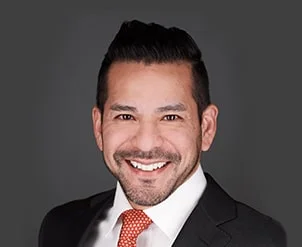Bouncing Back from an Illinois Bankruptcy

Many people are familiar with the story of the tortoise and the hare. The slow-moving turtle challenged the fleet-footed rabbit to a race. Largely by taking things one step at a time, the tortoise scored an unlikely victory.
Recovering from bankruptcy is much the same. It’s not easy to recover financially from a bankruptcy. In fact, it might seem impossible at first, like a turtle beating a rabbit in a footrace. This federal debt relief program is one of the biggest, blackest marks which can appear on a credit report. However, it does not look as bad as some other entries, such as foreclosure and repossession, which indicate that the debtor simply gave up.
Because bankruptcy is so traumatic, it takes some time to bounce back from a Chapter 13 repayment plan bankruptcy. A good Chicago bankruptcy attorney does more than represent debtors in court and give solid legal advice. An attorney also gives former debtors the tools they need to rebuild their financial lives.
Stay Current on Secured Debts
Lenders usually report mortgage payments, vehicle payments, and other secured debt payments directly to credit bureaus. Late payments in the wake of a bankruptcy are a very bad sign to potential lenders. They indicate that the debtor learned nothing and is repeating the same financial mistakes. Therefore, the debtor is even a greater credit risk.
It’s usually best to build a secured debt reserve. Try making thirteen payments a year instead of twelve. Most people do not miss the extra $50 or $100 per month. But do not add much more, since these reserves do not build interest. Also, make sure the lender counts the extra payment toward equity and not interest. If they receive no instructions to the contrary, banks always apply this money to interest.
This reserve helps debtors weather the next financial storm that comes along. The extra money builds goodwill with lenders, so they are more likely to consider accommodations like deferring a late payment until the end of the loan. In many cases, the reserve might enable families to skip payments during brief periods of hardship.
Borrow Money Responsibly
It may seem unusual to advise former bankruptcy debtors to borrow money, but that’s what they should do in most cases.
Find a credit card with a low balance maximum, like $500 or $1,000. Charge something on the car each month, and pay off the balance before the due date. Banks like to see people borrow money and pay it back on time, so most credit scores increase.
Post bankruptcy might also be a good time to buy a new car or even a new house. These debtors get the benefit of borrowing money responsibly and paying it back responsibly, as outlined above.
Former debtors will pay higher interest rates in the wake of a bankruptcy. So, always be upfront with lenders and tell them about the bankruptcy before they run your credit report. That knowledge softens the blow. If the lender’s terms are still unacceptable, go somewhere else. If one lender refuses to work with you, there are other fish in the sea.
Use What You Have Learned
During Chapter 13’s protected repayment period, many families learn to make financial sacrifices. Vacations become staycations, trips to sit-down restaurants become trips to fast food restaurants, and major purchases get deferred or cancelled. Don’t stop doing these things after court supervision ends.
Sacrifice is usually hard, but it usually pays off. The added financial discipline will help your family weather the next financial storm, so you need not file bankruptcy again.
Contact Dedicated Lawyers
A few simple steps help families put bankruptcy in the rear view mirror. For a free consultation with an experienced Chicago bankruptcy attorney, contact the Bentz Holguin Law Firm, LLC. After-hours visits are available.


